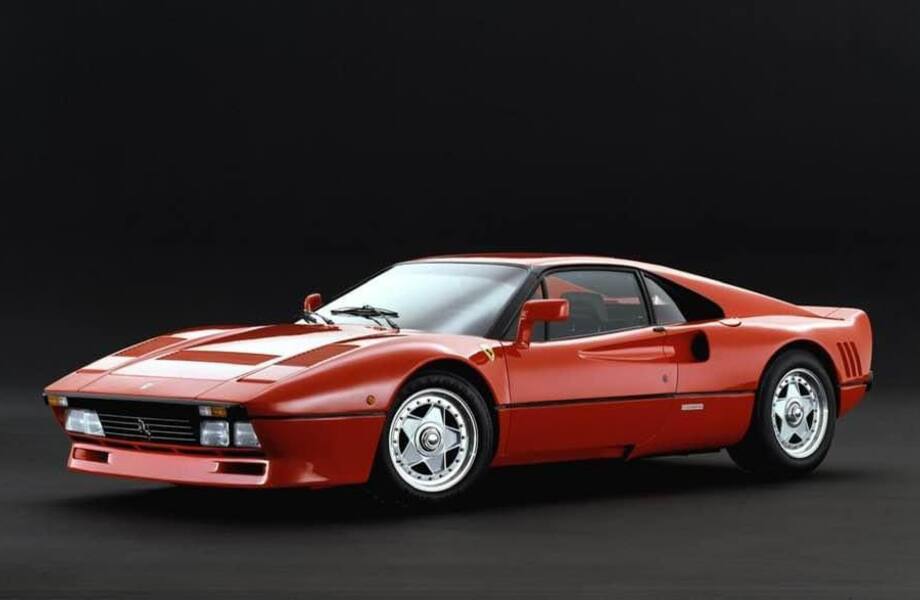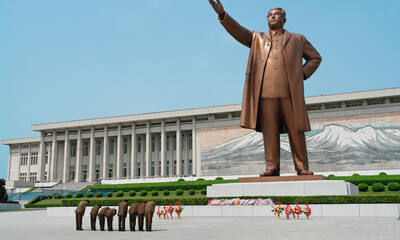


Back in 1984, 40 years ago on the dot, Ferrari presented to the world the now legendary 288 GTO at the Geneva Motor Show. The soon-to-be timeless classic was naturally the star of the show, attracting crowds to Ferrari’s stand.
The new 288 was immediately interesting from the outside for one simple reason – It had fashioned a badge not seen since the 250 GTO was produced in the sixties. This was no ordinary Ferrari, it was a Gran Turismo Olomogato – or GTO for short.


Named 288 according to one of the Ferrari naming guidelines – 2.8 litre with a V8 engine. The car was made in moulded fiberglass, with the hood of the car having Kevlar reinforced fiberglass, a great innovation at the time. The chassis was made of tubular steel, with a slightly longer wheelbase than the 308 which it closely resembles.
It was imagined as an entry to the Group B level of racing, and it got its engine from the Lancia, which competed in Group C with the LC2 – which debuted a year previous to the launch, in the 1000km of Monza. With a twin turbo configuration at a modest 0.8 bar of pressure, it would push out 400 horsepower. While this is not a significant number by today’s standards, back then it was nothing short of impressive.


In order to comply with FIA homologation standards, it had to be produced in at least 200 road-homologated units. This rule had brought the public a plethora of extremely exciting cars well into the late 90s just as well.
Once the news of the car broke out, there were many Ferrari clients queueing up to get their hands on their own GTO. By the end of production in 1985, 277 were made including the Evoluzione model, which counted only six units.
However – There is one more 288 GTO built, the 278th unit.


Niki Lauda, who had brought the Formula 1 championship to Maranello in 1975 with the 312T would be involved in a famous near-death accident at the Nurburgring Nordschleife the following year. Only saved by the quick intervention of several of his fellow drivers would spend a considerable period in the hospital after the crash. Enzo Ferrari promptly put Emerson Fittipaldi in Lauda’s seat. Something that Lauda would not take so lightly.
In the final race of the same season, Lauda was miraculously still the favourite to win the championship and beat James Hunt to the line, but it was not to be. Torrential rain struck the Fuji race track, prompting Lauda to make a decision on his own and park the car. He felt it was too dangerous to race. James Hunt would finish the race with enough points to win the championship.


This added another splinter into the relationship between Ferrari and Lauda. Enzo felt that Lauda should have braved out the weather, and secured a back-to-back title for Ferrari.
In the year to follow, Carlos Reutermann was Enzo’s pick for the number one driver. It did not work as well as Enzo had hoped, as Lauda was the one to carry the team to another F1 title. The wedge between the two greats was still very significant.
Lauda would go on to Brabham, after which Enzo called him a "traitor". He retired afterwards, but would return to McLaren to win his third F1 title before retiring for good. Afterwards, one of the more surprising twists in the intrigue of motorsport happened. Lauda took a consultancy role with Ferrari and Fiat.. Something that was thought to be impossible, considering his strained relationship with Enzo.

Naturally, he wanted to have a 288 GTO of his own. At the time, this was impossible. Each car to be produced was already allocated to a client. Ferrari would not trick any of their existing customers by re-allocating their car at this point. Thus, Lauda was told “Sorry, no”.
Lauda, however, knew all the right people in the power structure at Fiat. Having talked with Vittorio Ghidella, the CEO at Fiat, he planted a little bug in his head, and the wheels started turning. Even though production had ended at this point, Ferrari and Ghidella came up with a plan to get Lauda his car.
One more GTO would be built, with the expenses shared between the two companies. The car would be delivered on neutral ground.

In March 1986, five months after the “last” 288 GTO rolled off the line, Lauda’s unit was ready. Chassis number 58329. Lauda and the rest met at an airfield in Reggio Emilia away from public eyes, to deliver the final 288 GTO ever made, specially for him.
It was painted Rosso Corsa and seats in black leather with red inserts. The optional air-conditioning and electric windows were also installed. He then sat in the car, and drove it to Salzburg immediately, on the Escursionisti Esteri plate EE 304 AK.


Both Lauda and Ferrari were well known to be stubborn and incredibly rich characters. Lauda never got a word of apology for how he was treated by Enzo. However, the gesture of producing one extra special car for him, he more than likely knew that this was the closest he would get to an apology from Enzo.












The latest news and stories. All the best roads, hotels and restaurants. Invitations to exciting events. Be the first to know by subscribing to our newsletter.
More news and stories from the world of Gran Turismo








































Our favourite roads, hotels, restaurants and places to visit



Beautiful road trips and famous racing tracks since 2002. Supercars only.
While our head offices are in Geneva, Switzerland, the team is spread throughout Europe: Sweden, Poland, Italy and Croatia. Please select the appropriate team member to contact below.
For general enquiries, you can always use info@granturismo.org. For event registrations, please use registry@granturismo.org.